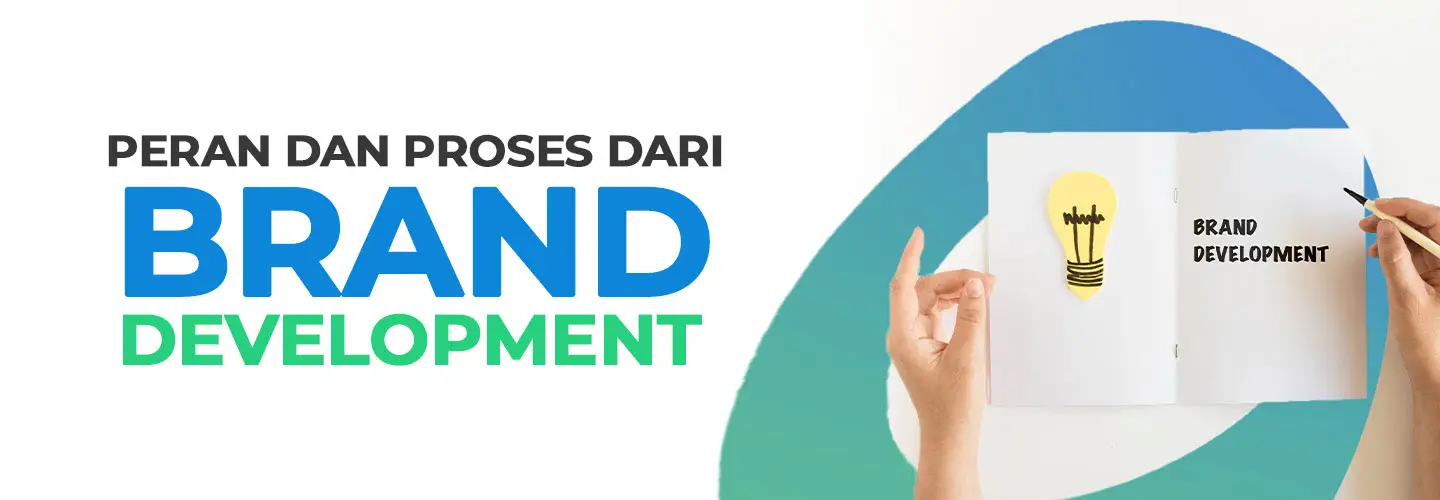What is Brand Development? Learn the Benefits, Creation Process, and How it's Different from Branding

What do you think and feel about brands like Apple, Adidas, GoPay? Do you immediately think of innovation, trendy, and financial solutions? Well, those feelings are formed in your mind and many people thanks to an effective brand development strategy.
Brand development is known as a way to transform products and brands that were previously ordinary into having distinctive characteristics and are always remembered by many people, especially loyal consumers.
Interested in learning more about brand development? Find out the meaning, benefits, roles, and processes in the following article.
What is Brand Development?
Brand development is a strategic step in managing and developing a brand. The goal is to build long-lasting brand equity, increase brand awareness, connect emotionally with target consumers, and excel over competitors.
This strategy is an ongoing process. Because brands and businesses continue to understand the changing needs of consumers, build brand identity, convey messages effectively, and adapt when needed.
Simply put, brand development forms an identity that represents the vision, values, and image of the business. This strategy must be implemented in every product, marketing effort, and even the sales process.
Benefits of Brand Development
Some of the benefits of brand development include:
- increasing awareness and becoming better known to consumers
- supporting business development targets
- reaching a wide and targeted market
- targeting and retaining various types of consumers
- building brand equity and value
- showing brand differences and advantages from competitors
- conveying brand messages and values clearly
The Role of Brand Development for Business
Reporting from Tiller Digital, brand development acts as an initial strategy that defines and develops many things that are needed by businesses to grow, including:
- Brand goals that combine qualitative (creativity) and quantitative (profit) elements.
- Brand purpose that determines the main purpose of the business, but is not limited to profit or business development. But what changes the business wants to bring to consumers, communities, and society as a whole.
- Audience persona that contains the goals, needs, fears, and concerns of consumers that the brand tries to answer through products that are solution-oriented and effective.
- Competitive review that describes the conditions of competitors like what they offer and the value they have. That way the brand knows how to surpass them.
- Brand positioning that focuses on unique and special messages that represent brand values in the market.
- Brand differentiator that differentiates your brand from competitors, to be the reason why consumers should choose your product over competitors.
- Brand character that contains brand personality and brand voice to ensure that the brand is directly connected to consumers so that the message delivered is in accordance with consumer needs.
Brand Development Process and Stages
Here are the processes and stages for creating an effective brand development strategy, reported by Dream Farm Agency:
Research and analysis
Conduct research and analysis to understand your target consumers, competitors, and current brand perception. Important data that you will get, such as:
- Target consumer demographics: age, class type, location, income level.
- Consumer needs and benefits sought.
- Challenges and problems that the brand can solve.
- Information about competitor products that are similar to yours.
- Analysis of branding, positioning, pricing, and others from competitor products.
- Weaknesses of competitor products, for example consumer problems that they have not solved.
- Knowing the current brand image and perception to identify gaps and opportunities that were previously not realized.
Determining brand identity
In this stage you will identify two things, namely brand personality and core values.
Brand personality
Useful for creating characters and characteristics that reflect the emotions and nature of the brand. Your brand persona must be able to attract consumers. You can create it by adjusting your business vision and mission.
Core value
You can determine three to five priorities and beliefs that control the operation and image of the brand. For example: Integrity, innovation, and sustainability. These values will be priorities and guidelines when creating products or promoting them.
Developing brand positioning
After successfully determining the brand identity, you must build brand positioning. Some things you must determine:
Frame of reference
The goal is to find out the product or service category and who your main competitors are. Examples of the categories in question are:
- smartphones and tablets
- running shoes
- transportation
Points of parity
Illustrate how your brand can meet the needs and expectations of consumers in the category. Examples:
- affordable
- best quality
- accessible
Points of difference
What are the unique values and advantages of your brand compared to competitors. Examples:
- environmentally friendly materials
- reduce gas emissions
- luxurious appearance
Create brand messaging
This final stage will combine all research data, values, and brand characteristics, then use them to communicate:
Product benefits and advantages
Explain the practical functions and benefits that your brand offers to consumers. Examples:
- save money
- durable / tough
- help dieting
Emotional function of the product
This emotional function must be felt by consumers after using your product or service. Examples:
- more confident
- calmness
Persona and tone of voice
Character, grammar, and style of language that will be used in various promotional elements of your product. For example:
- inspiring
- friendly
Differences between Brand Development and Branding
Many people still equate branding with brand development. Simply put, the differences between the two are:
- Branding: only focuses on visual appearance such as logos, names, slogans, and brand colors.
- Brand development: communicating important and profound values of a brand.
That is a complete explanation of brand development that you must understand. To build this one, you need to do research, analysis, and determine clear messages and goals.
Also, make sure brand development continues to adapt and adjust to consumer targets and changes in their needs. These values will help businesses determine many things such as brand purpose to brand character.
So, are you interested in learning how to do brand development properly? Learn more by joining Prasmul-Eli's short program, Strategic Brand Management.
You will gain relevant knowledge and experience directly from experts and professionals from related industries.
Click here to learn more and register for the program!
